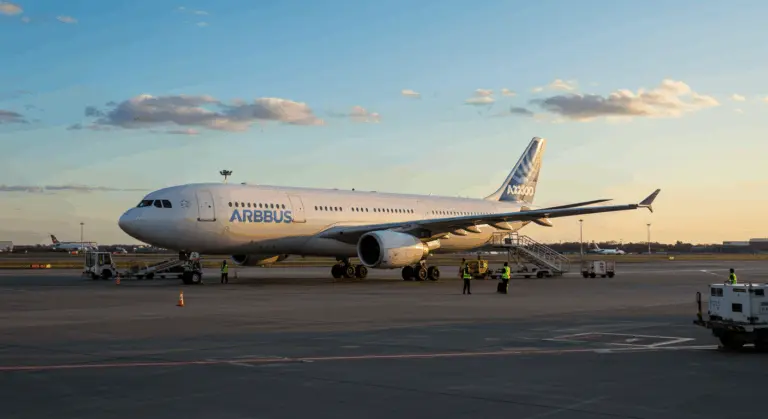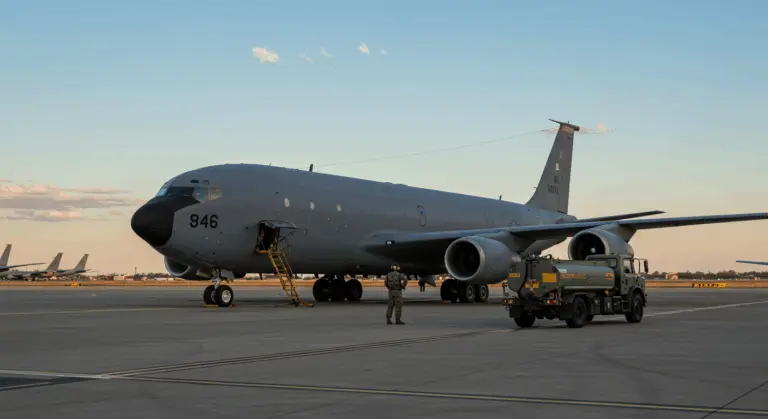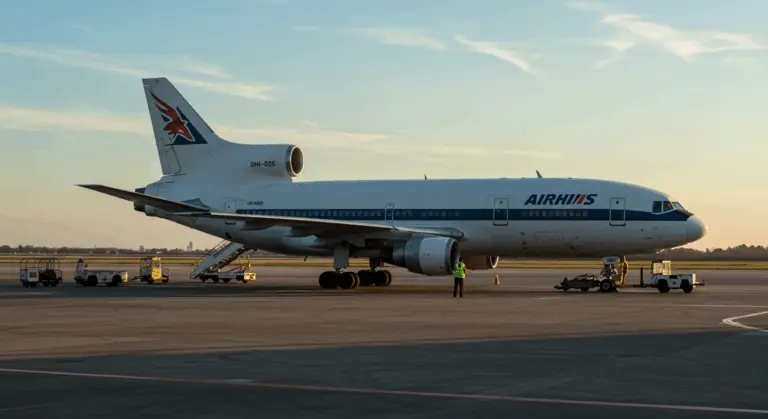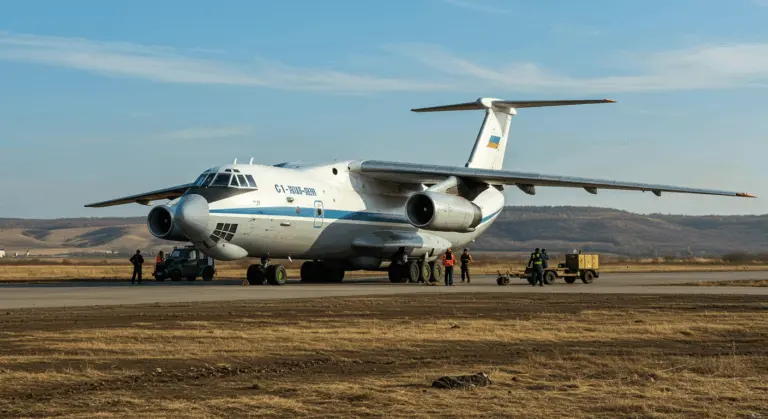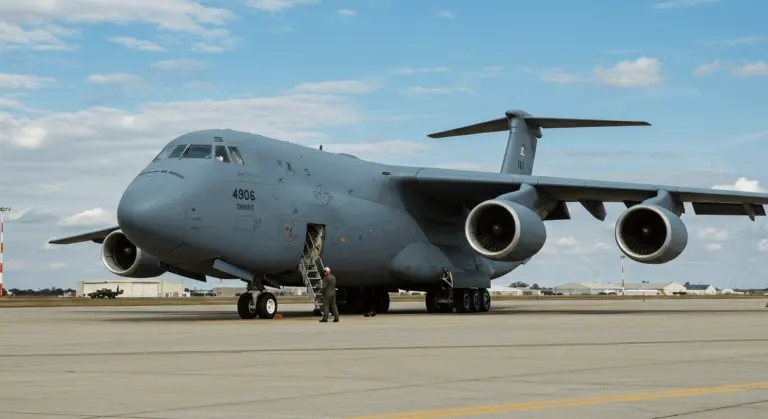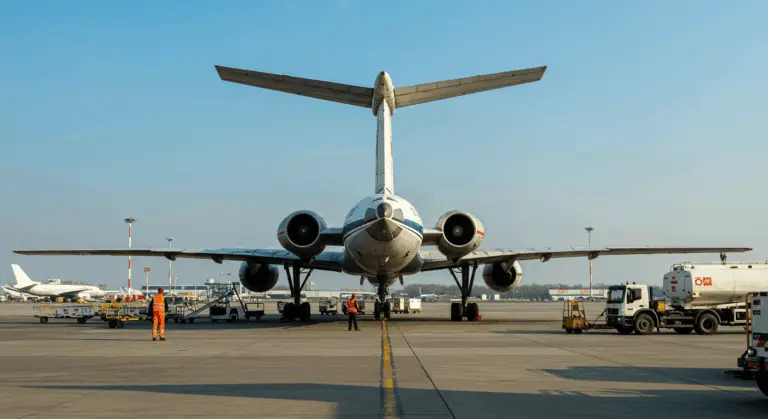Overview of the Douglas DC-3
The Douglas DC-3 stands as one of aviation’s most transformative aircraft, transforming air travel during the 1930s and 1940s. This remarkable machine, an evolved and enlarged successor to the Douglas DC-2, carved an indelible legacy across both civilian and military aviation landscapes.
With its distinctive design and powerful Wright R-1820 Cyclone radial engines, the DC-3 had an impressive presence. The aircraft’s superior performance and expanded capacity marked a significant advance in aviation technology, paving the way for mass adoption despite its substantial 12,700 kg maximum takeoff weight.
What set apart the DC-3 was its extraordinary versatility and unwavering reliability. Originally conceived for passenger service, this adaptable workhorse quickly demonstrated its value across countless roles—freight hauling, military operations, and specialized missions that would have challenged lesser aircraft.
Design and Development of the DC-3
The Douglas DC-3 emerged from urgent commercial needs within 1930s aviation. Airlines required an economical passenger aircraft capable of overcoming existing models’ crippling limitations—aircraft that were painfully slow and carried too few passengers to generate sustainable profits.
Engineers extensively modified to the DC-2 predecessor, creating what was essentially a new aircraft sharing fewer than 10% of original components. Key improvements included:
-
A longer, wider fuselage with rounded sides for better aerodynamics and passenger comfort.
-
Enlarged and strengthened wings and tail surfaces for enhanced stability and lift.
-
A redesigned nose section and landing gear for improved handling.
-
New, more powerful Wright engines delivering greater power and performance.
The civilian DC-3 quickly gained recognition for its exceptional reliability and commercial versatility. When World War II erupted, creating urgent military transport demands, engineers adapted the proven design into the legendary C-47.
Production and Variants
DC-3 production reached remarkable heights in aviation annals. The aircraft emerged in numerous variants, with two primary categories dominating: the civilian airliner and the military C-47 Sky train, extensively modified for wartime demands.
Production numbers were impressive—over 16,000 DC-3s and C-47s rolled off assembly lines across all variants. This massive manufacturing effort reflected both commercial triumph and the aircraft’s vital importance to Allied military operations during World War II.
Beyond the basic civilian and military models, numerous specialized variants were developed for specific applications, including:
-
Paratroop transports
-
Navigation trainers
-
VIP transports
-
Specialized cargo versions
This flexibility cemented the DC-3’s reputation for versatility while ensuring continued relevance—It’s enduring operational presence serving as living proof of design excellence.
Operational History of the DC-3
The Douglas DC-3’s operational saga commenced with its maiden flight on December 17, 1935, followed by commercial debut in 1936. This marked the beginning of aviation’s most remarkable service record.
Individual DC-3s often boasted captivating histories. Consider the aircraft now preserved at The Museum of Flight—built in 1940 for American Airlines as NC15591, it transferred to TWA in 1942, underwent brief cargo conversion in 1953, then returned to passenger service with Ozark Airlines in 1954.
The DC-3’s operational success remains unmatched—countless examples still grace the skies more than eight decades after introduction. This extraordinary longevity demonstrates robust construction and fundamental design brilliance.
DC-3 in Military Service
The DC-3’s military incarnation—the C-47 Sky train (British forces called it the Dakota)—became Allied tactical transport’s backbone during World War II. It proved indispensable in major campaigns including the D-Day landings, Operation Market Garden, and the Berlin Airlift.
Exceptional durability and reliability made the aircraft ideal for military operations in punishing environments. The C-47 operated effectively across extreme conditions—from Arctic freeze to desert heat to jungle humidity.
World War II’s conclusion didn’t end the DC-3/C-47’s military career—it continued serving in conflicts worldwide and with numerous air forces. Massive wartime spare parts stockpiles ensured maintenance support, while inherent versatility allowed adaptation to evolve military requirements.
Civilian Operations and Airlines
In civilian aviation, the Douglas DC-3 transformed commercial aviation with its effective combination of passenger capacity and operational efficiency. Carrying 21 to 32 passengers—a substantial increase over predecessors—while maintaining reasonable fuel consumption, the DC-3 finally made air travel profitable for airlines.
Major carriers quickly saw the DC-3’s potential. American Airlines and United Airlines ranked among early adopters, building expanding route networks around the aircraft’s proven capabilities.
By making routes profitable, the DC-3 enabled air service expansion and helped establish the hub-and-spoke system. Even after major route replacement, it discovered continued civilian utility in specialized roles: aerial spraying, freight transport, missionary operations, skydiver shuttling, and sightseeing flights.
Technical Specifications of the DC-3
Technical specifications for the prevalent DC-3A-S1C3G variant show the solid engineering behind its remarkable success.
| Specification | Metric | Imperial |
|——————–|——————————————|—————————-|
| Crew | 2 (Pilot, Co-pilot) | 2 (Pilot, Co-pilot) |
| Capacity | 21–32 passengers | 21–32 passengers |
| Length | 19.63 m | 64 ft 5 in |
| Wingspan | 29.0 m | 95 ft 0 in |
| Height | 5.16 m | 16 ft 9 in |
| Wing Area | 91.7 m² | 987 sq ft |
| Empty Weight | 7,650 kg | 16,865 lb |
| Max Gross Weight| 11,430 kg | 25,200 lb |
| Power plant | 2 × Pratt & Whitney R-1830 Twin Wasp | 2 × Pratt & Whitney R-1830 Twin Wasp |
| Power Output | 1,200 hp each | 1,200 hp each |
| Fuel Capacity | 3,112 L | 822 US gal |
Legacy and Cultural Impact
The Douglas DC-3’s legacy goes beyond operational success, permeating aviation culture while establishing design principles that influenced countless subsequent aircraft generations. Its impact on commercial aviation transformed airline industry economics, making regular passenger service financially viable and accessible to vastly broader society segments.
In popular culture, the DC-3 has become truly iconic, gracing countless films, documentaries, and literary works. Its distinctive silhouette remains instantly recognizable even to aviation novices, serving as visual shorthand for propeller-driven air travel’s golden age.
Today, the DC-3 stands as celebrated aviation heritage, with examples preserved in museums and flown at enthusiast gatherings. Remarkably, some remain in active commercial service—testament to enduring design practicality and unique historical significance.
Conclusion: The Enduring Legacy of the DC-3
The Douglas DC-3 represents outstanding engineering achievement. Its legacy stems from transforming commercial aviation—making air travel into profitable, reliable transportation—and unmatched versatility.
The DC-3’s influence permeates modern aviation. Its fundamental configuration—low-wing monoplane with retractable landing gear—and the hub-and-spoke operational model it pioneered remain industry standards today.

